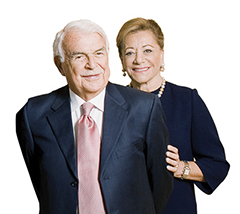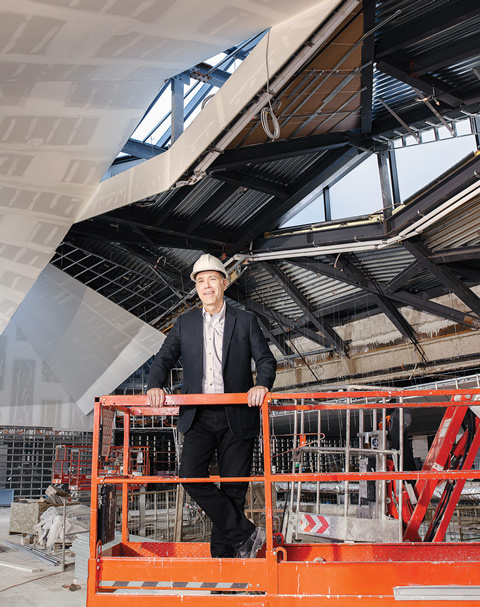Over the past three decades, Toronto has emerged as a global hub that exemplifies all the opportunities and contradictions of 21st-century urbanism. With a cultural vitality and diversity that’s rare among its global peers, Toronto consistently ranks among the world’s most livable cities. Yet, as anyone who lives here knows, the fast-growing region is grappling with traffic gridlock, soaring home prices and a deepening divide between haves and have-nots.
When he arrived at U of T from Harvard University in 2009, Richard Sommer, dean of the John Daniels Faculty of Architecture, Landscape, and Design, saw that U of T was already seeking answers to some of the city’s most pressing challenges. But he wondered how the university – and the faculty he was leading – could do more.
Sommer will answer his own question this spring with the opening of the renovated and expanded Daniels Faculty at One Spadina, made possible by donations from alumni and friends, including remarkable contributions from John H. Daniels (BArch 1950) and Myrna Daniels totalling $24 million. “This school means a great deal to me,” says John Daniels. “It’s the basis for my success.”
Over the next few months, the faculty will relocate into the transformed Spadina Crescent at the western edge of the St. George campus. As Sommer says of the undertaking, “U of T and the city need a school of architecture and design with a scale and character that is as, or even more, ambitious than the city itself.”
Designed by a team led by architectural firm NADAAA in Boston, the newly named Daniels Building will provide a platform for far-ranging debates and research about Toronto’s – and the world’s – ongoing urban experiment. “It’s a messy art,” Sommer says of city-building. Measuring urban problems isn’t sufficient to produce great solutions. “To get a better city, you need to bring creative thinking and imagination to the game,” he says. “The problems we face now can’t be addressed with one type of expertise or by staying in silos.”
Connecting students and faculty with residents, community groups and advocacy organizations is central to Sommer’s goal of linking U of T’s urban scholarship to the city at large. “These opportunities for engagement are critical to the success of our research,” he says.
Sommer sees the Daniels Building as a kind of urban “skunk works” – a think-tank where people from many disciplines and backgrounds collaborate on the toughest problems facing 21st-century cities such as Toronto: transit, open space, housing and urban design. By including entities such as the Global Cities Institute, the Daniels Building will evolve into a hub for U of T’s research on a range of urban issues, connecting students and researchers in engineering, political science and social work with those in architecture, art and urban design. “None of [us] can do a good job alone,” he says.
He also stresses that the faculty is a place for expanding and amplifying discussions about issues that affect the outlying parts of the city. He notes that the Daniels Building will provide an enhanced platform for the faculty’s research on such issues as delivering transit to low-density suburbs, and accelerating efforts to revitalize the 1960s apartment stock that many new immigrants call home.
As Sommer says, the faculty’s new digs, and the Daniels’ gift that transformed a long-neglected Toronto landmark, comes at a critical time. “It allows us to become something much larger, with much greater potential to make a huge impact.”
John H. & Myrna Daniels
 The Daniels Building was made possible with gifts totalling $29 million from 920 alumni and friends, including $24 million from John H. Daniels (BArch 1950) and Myrna Daniels. ($5 million of the Daniels’ contributions supports scholarships at the John H. Daniels Faculty of Architecture, Landscape, and Design.) Fundraising for the building continues.
The Daniels Building was made possible with gifts totalling $29 million from 920 alumni and friends, including $24 million from John H. Daniels (BArch 1950) and Myrna Daniels. ($5 million of the Daniels’ contributions supports scholarships at the John H. Daniels Faculty of Architecture, Landscape, and Design.) Fundraising for the building continues.
Recent Posts
For Greener Buildings, We Need to Rethink How We Construct Them
To meet its pledge to be carbon neutral by 2050, Canada needs to cut emissions from the construction industry. Architecture prof Kelly Doran has ideas
U of T’s 197th Birthday Quiz
Test your knowledge of all things U of T in honour of the university’s 197th anniversary on March 15!
Are Cold Plunges Good for You?
Research suggests they are, in three ways





